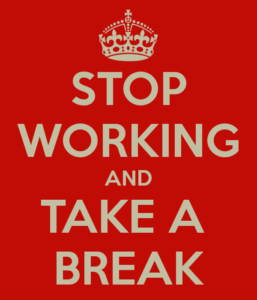Bringing the Sabbatical into the Business World
 The Wall Street Journal has a piece on the adaptation of the sabbatical from academic tradition to corporate perk:
The Wall Street Journal has a piece on the adaptation of the sabbatical from academic tradition to corporate perk:
Unlike the semester- and year-long sabbaticals common among academics, the new leave programs, which usually come with full pay, are shorter—lasting as little as a week—and occur earlier in an employee’s tenure at a company.
Executives say that these programs help to stem employee burnout and force the company to develop redundant skill sets so that no employee becomes truly indispensable. But unsurprisingly, many American workers balk at the chance to take a break on a three to six week scale, even with full pay and benefits and an additional cash incentive:
U.S. workers tend to be shy about taking a week off, much less two. According to a new report from the U.S. Travel Association, American workers took off an average of 16 days last year, down from 20.3 before 2000.Driving the trend is Americans’ “work martyr complex,” the report states, and a belief that too much time out of the office could harm their careers.
We've talked a fair amount on this blog about the false tension between humanity and productivity in a work environment. It seems that more managers are getting the message that thoughtfully tending to employees' well being serves the company, but convincing employees that accepting an offer of leave will not damage their careers is another matter.
===============
Dent the Future is a conference series that tackles the art and discipline of visionary leadership. The next Dent The Future conference is coming up March 23-26, 2019. Register here.

